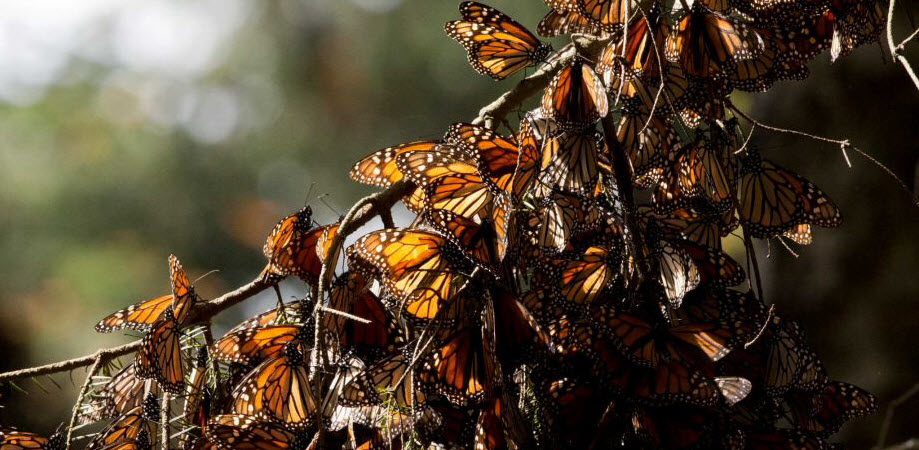A kaleidoscope of monarch butterflies hangs from a tree branch in the Piedra Herrada sanctuary near Valle de Bravo, Mexico. Photo: Rebecca Blackwell /Associated Press
KANSAS CITY, Mo. — A butterfly being considered for federal protection is emblematic of the plight that pollinating insects face in part because farmers, enticed by ethanol mandates, are growing more herbicide-resistant crops, which has stripped millions of acres of crucial plant habitat.
Herbicide makers say they’re committed to helping the black-and-orange insects, whose numbers have plummeted by more than 90 percent in the past two decades. And environmentalists seeking protection for monarchs under the Endangered Species Act said restoring milkweed habitat would help other pollinating insects, too, such as honey bees, whose numbers of managed colonies have dropped by more than 4 million beehives since 1947.
“My feeling is if the monarch goes, it is like the canary in the coalmine,” ecologist Lincoln Brower with Sweet Briar College in Virginia said.
The U.S. Fish and Wildlife Service is taking comments and data about monarchs through March 2, and a decision on whether to list the monarch as threatened is due in December.
Although a plan for helping the monarch wouldn’t be developed unless it gains “threatened” status, the solution needs to address herbicides as well as mowing public roadsides less frequently, Brower said.
Some monarch populations migrate thousands of miles from breeding and wintering grounds, but along the route, there’s less of the milkweed they depend upon to nourish them and on which they lay their eggs, a loss caused by more corn and soybeans, logging, construction and a drought that peaked in 2012.
Environmentalists say the butterfly’s decline — the overwinter population in Mexico reached a low in 2013 — has coincided with the rise of St. Louis-based agribusiness giant Monsanto’s popular weed killer Roundup, blamed for knocking out the milkweed plants.
Monsanto then introduced Roundup Ready crops, which resist the herbicide, with a soybean version in 1996 and a corn version in 1998.
Ethanol gained ground alongside the rise of those crops, and a renewable fuel standard approved by Congress in 2007 provided a major boost to the corn-based fuel.
As millions more acres of land was cultivated, there was an estimated 64 percent decline in milkweed plants from 1999 to 2012 in the Midwest, Iowa State University ecologist John Pleasants said.
Monsanto said in a statement that it is “committed to working with others to put more monarchs in flight,” and is working with the nonprofit Keystone Center in Colorado.
Content by Associated Press, posted to SA Express News on February 28, 2015 – the article can be found HERE

